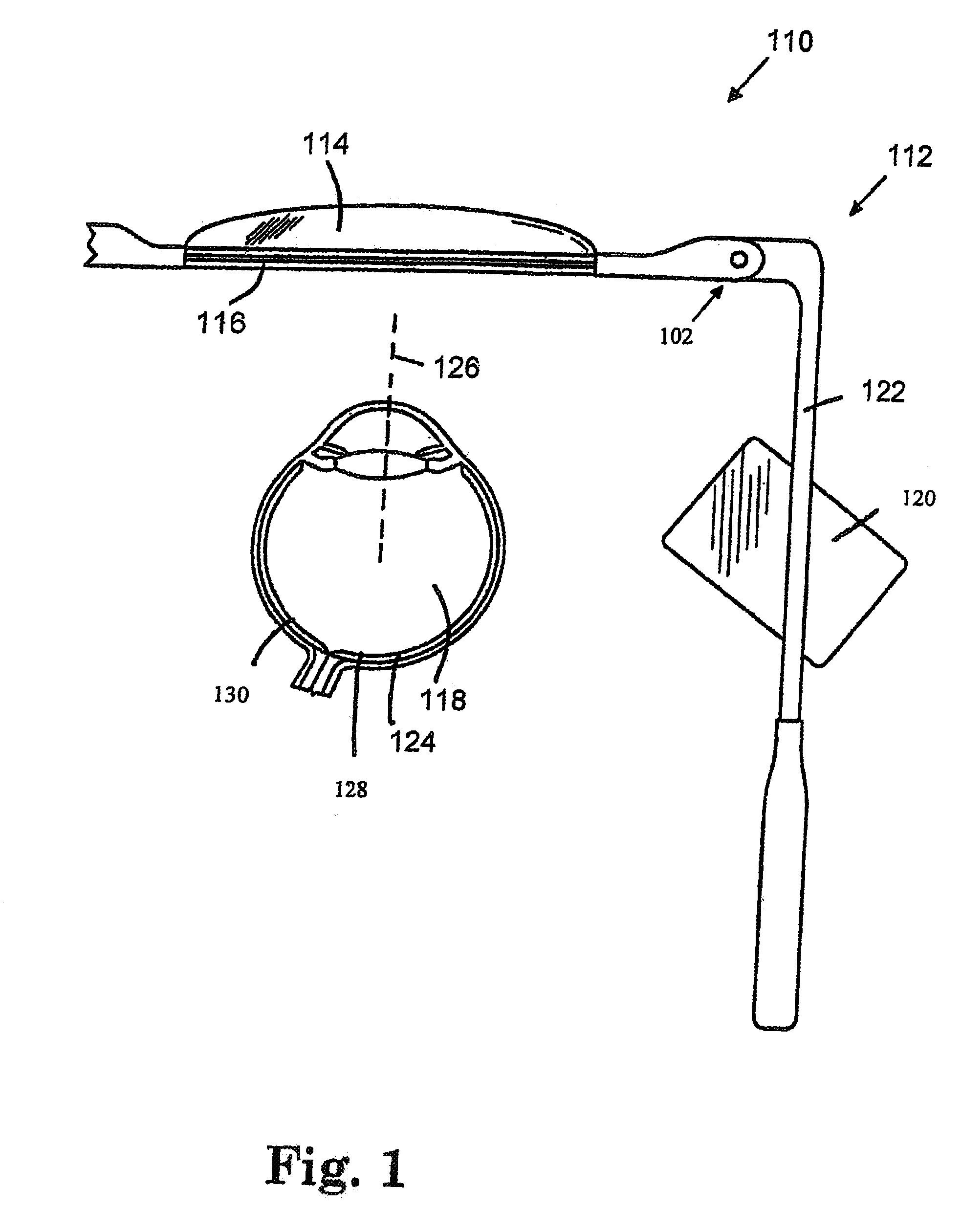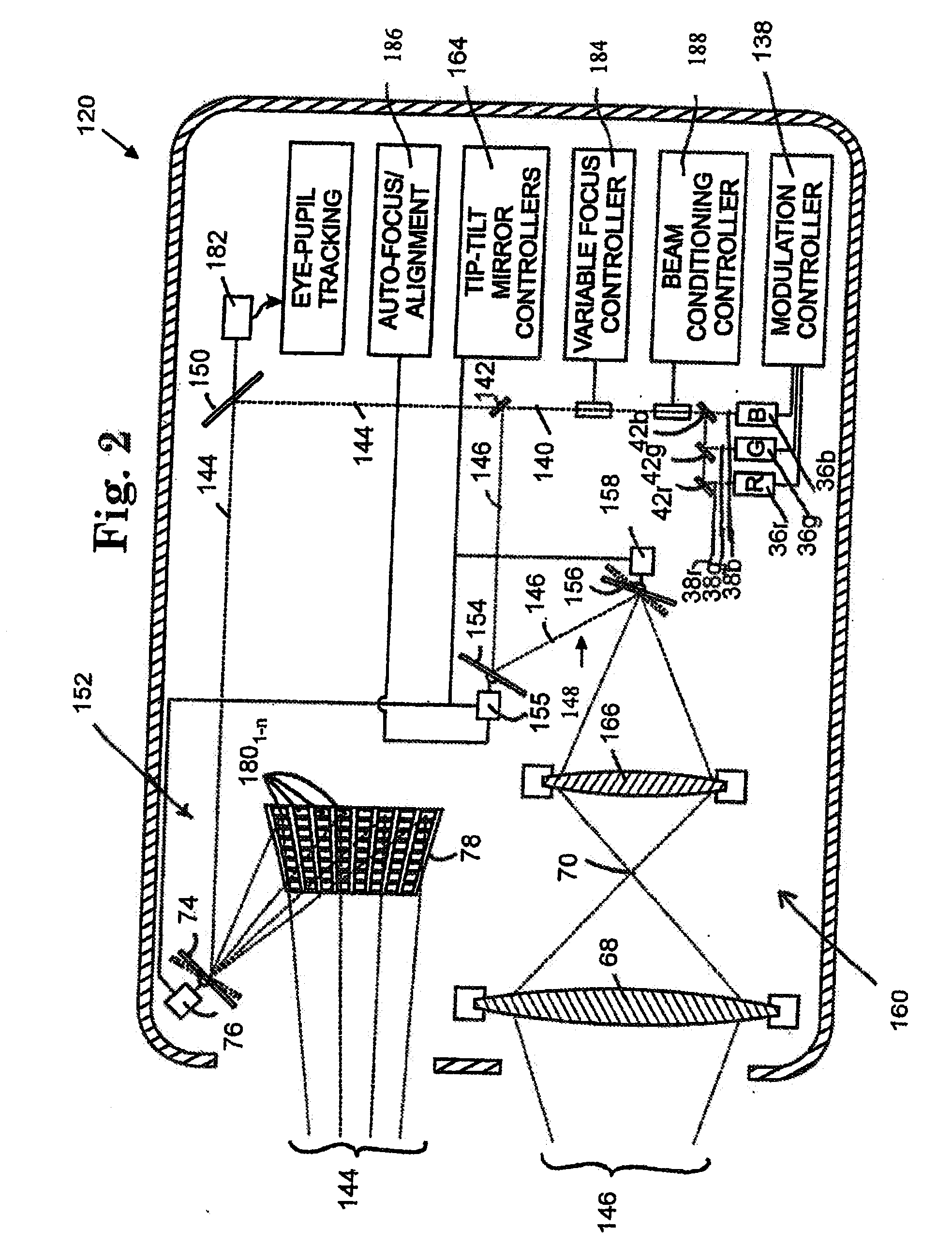Near to eye display and appliance
a technology of display system and eye, applied in the field of eye display system, can solve the problem that the flicker of the entire screen is believed to be unnoticeable to most people above about eighty frames per second, and achieve the effect of reducing flicker, reducing duplication in projector settings, and reducing the perception of digital artifacts
- Summary
- Abstract
- Description
- Claims
- Application Information
AI Technical Summary
Benefits of technology
Problems solved by technology
Method used
Image
Examples
example mapping
Procedure
[0707]FIG. 18 shows an example method for mapping a proximal optic and projector system onto a pixel layout (representing, for example, the field of view of a user of the system), where the proximal optic contains two types of redirectors, one to cover the central (foveal) field of view and one to cover the peripheral field of view. In practice, there can be multiple types of redirectors and multiple projector systems for each type. The mapping procedure is believed extensible, provided that the projectors and proximal optic provide full coverage of light to the desired pupil sphere.
[0708]Assume again for clarity that the pixel layout is rectangular, arranged in an X×Y layout with X pixels in the horizontal direction and Y pixels in the vertical direction. Assume further that the projectors are adjustable in two degrees of freedom, namely horizontal and vertical, and that these degrees of freedom can be specified in discrete quantities, say H different horizontal positions ...
example layout
of Redirectors
[0723]FIG. 21 provides an example division of the pupil sphere into predetermined locations, in this case a somewhat rectangular grid of predetermined pupil locations arranged on the (three-dimensional) surface of the eye. There are five rows, numbered 1-5, and six columns, numbered 1-6. Each of the predetermined locations is assigned a two-part number r,c where r is the row number and c is the column number. For example 1.1 is the number of the predetermined location in the upper left corner which 5.6 is the number of the predetermined location in the lower right corner. Note that the actual predetermined locations are points on the pupil sphere. For example, the centers of the corresponding individual cells delineated in FIG. 21 could represent the predetermined locations. The cells then would mark the region of the pupil sphere assigned to that predetermined location. For instance, if the actual center of the pupil were anywhere in cell 3,4 then the corresponding pr...
example mid
-Level Processing
[0727]The above mapping and scanning procedures provide some of the low-level (within an image frame) implementation details. FIG. 23 shows an example mid-level (between image frames) processing routine. It starts with the 2300 process next image frame, doing the appropriate processing (as discussed above) to scan the next image frame onto the retina. This step may be repeated some number of times, depending on the refresh rate.
[0728]At this point, certain changes to the user's eye may be checked for. For instance, 2310 has the pupil location changed (as detected by the pupil tracker)? If so, the image displaying may need to be suspended until the new pupil location on the pupil sphere can be predicted or determined (by the pupil tracker), the appropriate image data obtained or reprocessed by the image processor, and new frame data built. In addition, 2320 has the head location changed (as detected by the head tracker). If the head location is being tracked, then a ...
PUM
 Login to View More
Login to View More Abstract
Description
Claims
Application Information
 Login to View More
Login to View More - R&D
- Intellectual Property
- Life Sciences
- Materials
- Tech Scout
- Unparalleled Data Quality
- Higher Quality Content
- 60% Fewer Hallucinations
Browse by: Latest US Patents, China's latest patents, Technical Efficacy Thesaurus, Application Domain, Technology Topic, Popular Technical Reports.
© 2025 PatSnap. All rights reserved.Legal|Privacy policy|Modern Slavery Act Transparency Statement|Sitemap|About US| Contact US: help@patsnap.com



